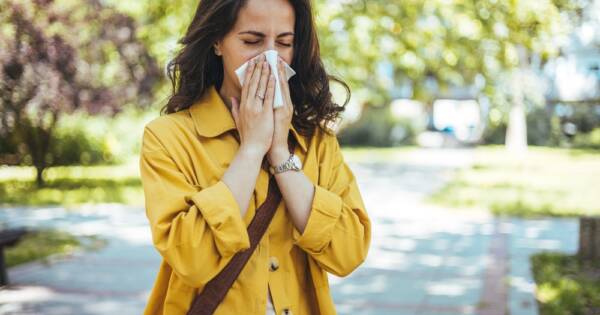You aren’t the only person that has had to fight through a workday with a painful migraine. They’re said to occur in as many as 10-percent of all people.1 It’s safe to assume that most of those people have tried a multitude of ways to help alleviate their pain or prevent migraines altogether.
Today, we’re going to take a closer look at the frustratingly common condition called migraines. More importantly, we’re hoping to point you towards a few of the most effective and affordable products designed to help treat them. From ice-infused migraine hats to acupressure mats, help is out there for those that know where to look.
 fizkes/Shutterstock
fizkes/ShutterstockWhat Are Migraines?
Migraines are headaches that appear suddenly and can last for hours, and sometimes days. Though some patients report the appearance of pre-migraine warning signs, many instances come about without warning.2 They can appear in anyone regardless of age or sex, and can be quite severe.
Common migraine symptoms include:
- Pain on one or both sides of the head.
- Throbbing or pulsing pain.
- Sensitivity to sound, touch, smell, or light.
- Nausea and sometimes vomiting.
Even once the worst of it is over, a migraine might leave you feeling mentally and physically exhausted and inhibit your ability to focus. It’s not uncommon for symptoms of head pain and light sensitivity to linger on for hours past the migraine’s peak.
Migraine Phases
We often describe them by the period at which they’re at their peak, but the headache phase of a migraine attack is just one of four distinct phases.3 Everyone is different, but migraines typically progress through a usual timeline that can last anywhere from a few hours to a few days.
In order, the four phases of migraine attacks are:
Phase 1: Prodrome
This first phase can last a few hours or go on for days. Symptoms include irritability, yawning, difficulty concentrating, nausea, and trouble sleeping.
Phase 2: Aura
Consistent with feelings of visual disturbances or numbness in the body, the “aura” phase can last as little as a few minutes.
Phase 3: Headache
Phase 3 is associated with the most severe symptoms including throbbing pain, nausea, light sensitivity, and more.
Phase 4: Postdrome
The postdrome phase follows the migraine’s peak and is associated with fatigue and an inability to concentrate.
What Causes Migraines?
Migraines happen when nerves in your brain send pain signals to your brain. Why that happens though isn’t fully understood. We do know that migraine attacks can be triggered by various events and occurrences.4
Common migraine triggers include:
- Stress
- Allergies
- Having too much caffeine
- Caffeine withdrawal
- Light sensitivity
- Weather changes
- Dehydration
There are yet even more potential migraine attack triggers. In truth, everyone has different triggers and most migraine sufferers are well aware of their own. If you don’t know what your migraine triggers are, keep a journal and watch for trends.
Migraine Treatments
It’s always a good idea to communicate your migraine symptoms with your doctor before self diagnosing on the internet. They do have a number of tests and treatments available to help. Treating migraines medically is done through the use of pain relief medications and a number of preventative medications.
Pain relief medications are used at the first sign of a migraine and can often be purchased over the counter. Popular options include Advil, Motrin IB, and Tylenol.
Preventative medications must be prescribed by a doctor, and could be a combination of anything from blood-pressure medications, to antidepressants, to anti-seizure drugs.
5 Products to Ease Migraine Pain
There are a number of lifestyle changes and non-medical treatment options available online that may help to either minimize the frequency of migraines or decrease their severity. Doctors recommend that you take time to destress, keep a migraine journal, and prioritize sleep.
In addition to a few modest lifestyle changes, you may find relief with one of the popular migraine treatment products below:
Foam Roller: Affordable, storage friendly, and a great way to relieve migraine-related tension without the need for a costly massage. Foam rollers are available in a variety of styles, sizes and colors, with prices starting at $9.03.5
Acupressure Mat: They look like a combination of a yoga mat and the bottom of a golf shoe, but acupressure mats use an age old technique to alleviate tension and stress. Amazon is full of acupressure mat options, some that cost as little as $29.93.6
ICY HOT: The over-the-counter topical muscle reliever is a popular choice among those that experience intense tightness in their neck and shoulders. A bottle can be yours for under $10, and can be found at most pharmacies and big-box retailers with health and wellness sections.7
Migraine Relief Cap: These innovatively designed caps use pockets filled with freezable gel to cool the whole head at once. They aren’t as expensive as you’d think either. Get one for $26.99 and stay ready by storing it in your freezer.8
Migraine Cooling Headache Pads: Similar to the hot/cold patches you use for muscle aches, migraine cooling pads use adhesive to deliver long-lasting symptom relief. Pick up a 12 pack on Amazon for just $12.99.9
Move Over Migraines!
It may be old hat for you by now, but learning about migraines is the first step to getting better. You shouldn’t expect to kick them entirely, but by putting what you learned here into practice, you may be able to reduce their severity and their frequency.
Either way, it’s never a bad idea to loop your doctor into the conversation. They can prescribe treatments, take tests, and offer advice. You should also reach out to your doctor if your migraines increase in frequency, severity, or don’t improve with the use of over-the-counter medications.10


